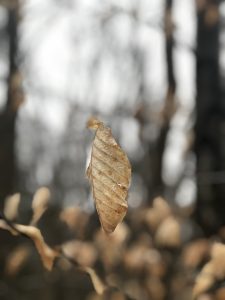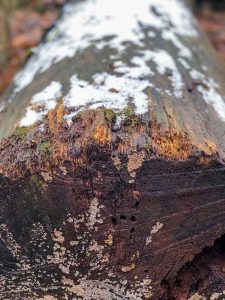
While walking through the woods on our class trip to Brown’s Bog my attention was drawn to the size of the trees. More specifically the smallness of the greater majority of them. When walking through Johnson’s woods during the past field trip, there were countless trees that were massive and could easily have been over 200 years old. Contrast that with the size of the trees at Brown’s Bog, and it is easy to see how different old-growth forests are from those which were clear cut at one point. While walking the kame trail there were only a small handful of trees which I would believe to be 200 years of age. The largest discrepancy which I noticed was the sizes of the beach trees. While nearly all of the beach trees at Johnson’s woods were quite large, I only recall seeing two small beach trees clinging to their leaves in the Browns Bog. The tree size discrepancy which I perceived allowed the group to experience variance in ecosystems processes in Northeast Ohio.

